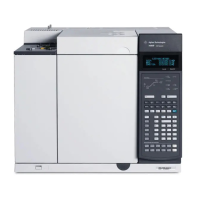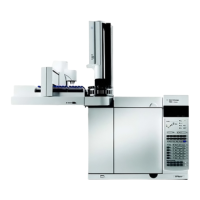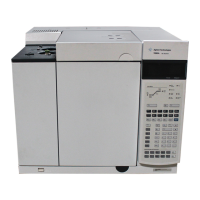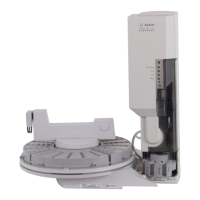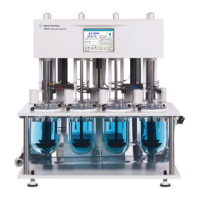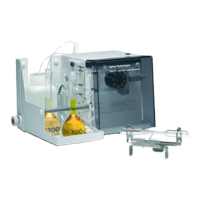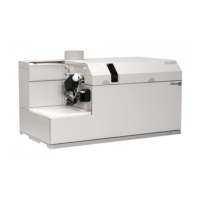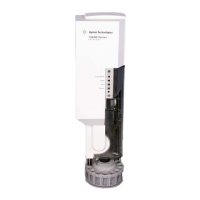Columns and Oven 4
Advanced User Guide 53
About Columns
In all GCs, a sample—which is a mixture of several
components—is vaporized in an inlet, separated in a column,
and examined in a detector.
The column separates components in time because:
• When a vaporized component is presented with a gas phase
and a coating phase, it divides between the two phases
according to its relative attraction to the two phases.
• The “attraction” can be solubility, volatility, polarity, specific
chemical interaction, or any other property that differs from
one component to another.
• If one phase is stationary (the coating) and the other is
moving (the carrier gas), the component will travel at a speed
less than that of the moving phase. How much less depends
on the strength of the attraction.
• If different components have different “attractions”, they will
separate in time.
Selecting the correct packed glass column type
This topic is covered in the Maintenance manual. See To attach
a packed column to the purged packed inlet for details.
About the column modes
The flow modes available are determined by the GC inlet’s
control mode. When the inlet’s control mode is set to Pressure
control, all of the flow modes and pressure modes below are
available for the column. When the inlets control mode is set to
Flow control, the column’s mode is not selectable. For an inlet’s
mode of Flow control, only column flow can be entered.
The flow modes
Flow rates are corrected to NTP (normal temperature and
pressure, 25 °C and 1 atmosphere.
• Constant flow—Maintains a constant mass flow rate of
carrier gas in the column throughout the run. If the column
resistance changes due to a temperature program, the
column head pressure is adjusted to keep the flow rate
constant. This can shorten runs significantly.
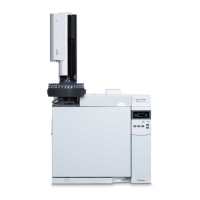
